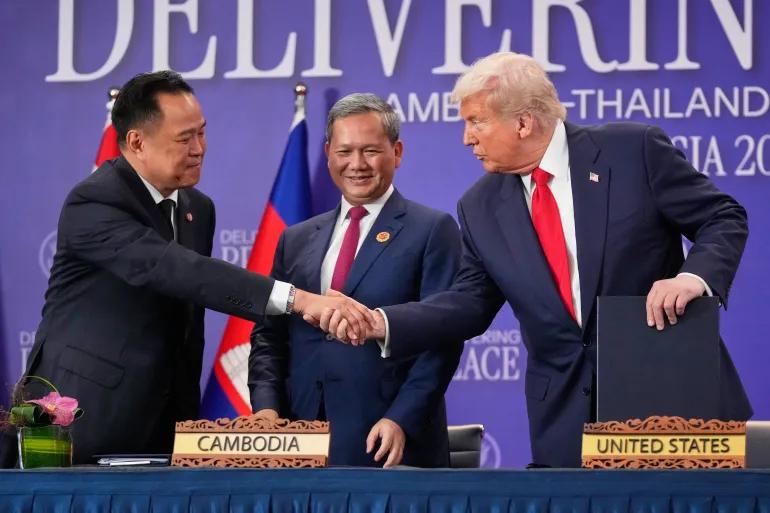Trump Brokers Historic Ceasefire Between Thailand and Cambodia
 World
WorldAhmed Shurau
United States President Donald Trump has overseen the signing of a ceasefire agreement between Thailand and Cambodia, marking a major diplomatic breakthrough on his first trip to Asia since returning to office.
The accord, co-signed on Sunday during the ASEAN Summit in Kuala Lumpur, was inked by Thai Prime Minister Anutin Charnvirakul, Cambodian Prime Minister Hun Manet, and Malaysian Prime Minister Anwar Ibrahim, alongside President Trump. The deal builds on a truce brokered in July that halted deadly border clashes between the two Southeast Asian neighbours.
Prime Minister Anutin described the agreement as laying “the building blocks for a lasting peace,” while Hun Manet hailed it as a “historic day.” Malaysian leader Anwar Ibrahim commended the accord as proof that “reconciliation is not concession but an act of courage.”
The ceasefire’s first phase requires Thailand to release 18 captured Cambodian soldiers and to remove heavy weaponry and landmines from disputed border areas. Malaysian peacekeepers will be stationed along the frontier to monitor compliance and prevent renewed hostilities.
The border between Thailand and Cambodia — stretching over 800 kilometres (500 miles) — has long been contested, its origins tracing back to an ambiguous 1907 French colonial treaty. The most recent clashes centred around regions near the Laos border and several ancient Angkor-era temples, historical flashpoints for both nations.
Following the peace accord, President Trump signed bilateral trade agreements with Cambodia, Thailand, and Malaysia, along with critical minerals cooperation deals with Bangkok and Kuala Lumpur.
Under these agreements, the three countries committed to lifting most trade barriers on U.S. exports, particularly agricultural products — a move Trump described as a “win for American farmers and a stronger Asia-Pacific partnership.”
The dual success of securing peace and trade pacts underscores the administration’s renewed focus on Asia-Pacific diplomacy and economic engagement, positioning the U.S. as a key mediator and trading partner in the region’s shifting geopolitical landscape.
 Sports12/16/20252nd Masters Athletics Championship Maldives 2026 Open for Registration
Sports12/16/20252nd Masters Athletics Championship Maldives 2026 Open for Registration News12/15/2025Customs Seize MVR 2.4 Million Worth of Cannabis at VIA
News12/15/2025Customs Seize MVR 2.4 Million Worth of Cannabis at VIA Business12/15/2025Ooredoo Maldives Launches New Roaming Data Add Ons for Travelers
Business12/15/2025Ooredoo Maldives Launches New Roaming Data Add Ons for Travelers.jpg&w=3840&q=75) News12/15/2025PG Office Files Charges Against 10 in Major Cigarette Theft Case
News12/15/2025PG Office Files Charges Against 10 in Major Cigarette Theft Case